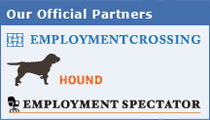Interviewing Techniques
By Hardeep Arora
|
|
Behavioral interviewing has been around for over three decades, so this method and technique is not new. This phrase was coined a time when interviewing techniques were taking on heightened importance in the selection process due to low unemployment ratios and the consequent demand-supply mismatch. Behavioral interviewing technique is based on the premises that the most accurate barometer of future efficiency is past performance in similar circumstances.
This technique was employed primarily to minimize bias and maximize facts by identifying specific behavior patterns that would serve as either strength or weakness for a particular opening, and home in on an applicant's ability to do the job. This approach helps increase the probability of suitably matching individual skills to the specific requirement.
Nowadays there are hundreds of online resume writing professionals who help people craft resumes that maximize their professional background and abilities. Online resume writing experts compose products with significant strategizing and brainstorming that give a good sense of the individual they are written about, convey the person's best attributes in a clear, concise manner. Online resume writing professionals draft effective marketing resumes that leverage person's strengths, diminish weaknesses, and maximize opportunities.
This intense level of professionalism displayed by online resume writing consultants makes it complicated for interviewers to truly gauge the quality of the applicant in the pre-selection process. Therefore, interviewers should always remember that resumes are promotional materials written either by applicant or online resume writing experts to persuade them why the applicant should be hired. Online resume writing experts excel in turning nicely formatted words and symbols into someone worth getting to know.
However, just as there are ways that promote interviewing, there are also techniques that inhibit the communication process, such as asking biased questions or giving opinion or advice. It means moving the applicant beyond the comfort zone. The cardinal rule is to make the interviewee feel comfortable. Employers can get information at a much faster and accurate rate if they ask a question that the applicant can confidently answer. Making the experience easy and enjoyable induces the interviewee to provide more information and save time.
Sources:
Carolyn B. Thompson. Interviewing Techniques for Managers
Richard Fear, Robert J. Chiron. The Evaluation Interview: how to probe deeply, get candid answers, and predict the performance
Arthur R. Pell. The Complete Idiot's Guide to Managing People
Janis P. Bellack, Barbara J. Edlund. Nursing Assessment and Diagnosis
On the Net
web.oxnardsd.org/pubs/pcrr/10100pcrr.htm
Interviewing Techniques
www.uwrf.edu/ccs/assets/documents/handouts/interviewing.pdf
Wikipedia
en.wikipedia.org/wiki/Interview




